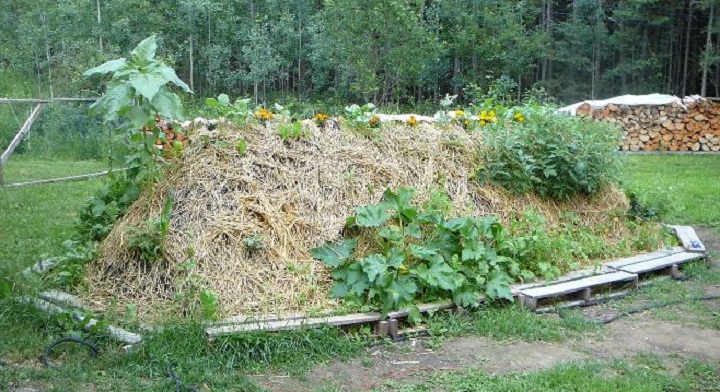Kind of a wide-ranging post today. In a nut shell, I've been doing some reading and research in an effort to pack Part IV of the series with some additional concepts and useful ideas. On tap today, we have Mini Meadows, Switchgrass, and Hugelkultur.
Spoiler Alert: The bulk of the characters in Part IV pretty much spend the entirety of the book on a journey that sees them leave the farm in McArthur, Ohio and head west toward the far end of the central plains and back again. Fear not though, the home fires are kept burning with a nice complement of characters too. I tell you this so you'll understand how and why these three ideas are related. Given the locations of scenes and the interactions the characters have, each of these concepts has a degree of validity as it pertains to beneficial knowledge transfer to locals struggling to survive 20 years after an EMP.
Mini Meadows:
What is a mini meadow? Pretty much what it sounds like actually. The concept is pretty easy and straight forward... take some open space and plant native plants/grasses in an effort to maintain and/or increase your local population of pollinators. The general precept being the restoration of native prairie in little way stations for local populations of insects and some migratory species.
Anyhoo, I found this article some time ago and forwarded it to a friend that has some land outside of the city. The next weekend he started incorporating some of the concepts to maintain his bee hives. When I last checked in with him, his hives responded well and he attracted more butterflies than he knew what to do with. So, that's good. Here's the link:
Switchgrass:
The concept of biomass produced ethanol has been kicking around in the back of my mind ever since I took an interest in biofuels as a means to produce fuel for vehicles in an off grid, self-sufficiency type of way. Well, to be fair, I've been interested in switchgrass biofuels and gasifiers, but since I covered gasifiers in Part III, I figured I'd try and include switchgrasses in Part IV.
Once upon a time, the American plains were covered with these tall grasses. The Bison that inhabited the land used the tall grasses to evade predators, birth their calves, and as shelter from nature's fury. Switchgrass is extremely hardy and one of its hallmarks is its deep root system.
Just look at the image below! With a root structure like that it's no wonder the grasses can survive severe drought and fire!
Image from Wikipedia
Now, to get to an end product, that being liquid fuel, you might need a better than average understanding of chemistry. Here's a couple of links to give you some background on switchgrass:
- Wikipedia: Panicum Vigatum
- eXtension: Switchgrass for Biofuel Production
- Scientific America: Grass Makes Better Ethanol Than Corn Does
Hugelkultur:
This is a 'no dig' type of gardening and translates as 'hill culture' or 'hill mound'. In a nut shell, it represents one of the many forms and concepts of permaculture gardening. The idea behind hugelkultur is so simple it's almost laughable. Basically, dig a hole, place some timber in the hole, cover the timber with additional compost like material, cover that again with good soil, then seed the hell out of it.
Image from Permaculure Magazine
My friends over at The Prepared Homestead have a YouTube channel where they discuss what they did and you can see one that is starting to produce. Here's the link for that: Prepared Homestead Channel.
Here is some additional information on hugelkultur as well:
- Raised Bed Vegetable Gardening With Hugelkultur; An Introduction To Growing Vegetables In Timber And Soil Heaps
- Best Way to Improve Your Soil: Hugelkultur Update
- The Making of a Hugelkultur Garden Bed
The concept of hugelkultur appeals to me greatly both personally and for my fiction because it's an easy concept to grasp, implement, and write about plus it can be done just about anywhere... even say in southwest Oregon where a character happens to be travelling through.


